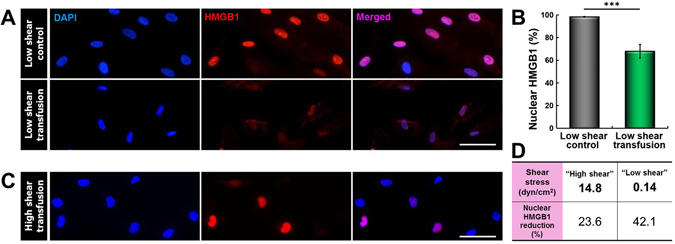Figure 4.

Effect of hemodynamic shear stress on transfusion-induced endothelial injury. (A,B) Endothelial perfusion with RBCs at a sub-physiological level of shear stress (0.14 dyn/cm2) gives rise to marked downregulation of nuclear HMGB1 expression (“low shear transfusion”), indicating severe necroptosis in the microvascular endothelium (***p < 0.001; n = 3). “Low shear control” refers to perfusion of the microfluidic endothelium at 0.14 dyn/cm2 with culture medium alone. Blue shows nuclear staining. (C,D) Qualitative and quantitative comparisons of transfusion-induced nuclear HMGB1 loss between the sub-physiological “low shear” (0.14 dyn/cm2) and physiological “high shear” (14.8 dyn/cm2) conditions. RBC perfusion at physiological shear stress results in significantly smaller HMGB1 reduction, suggesting the protective role of physiological hemodynamic microenvironment. Scale bars: 50 μm.
